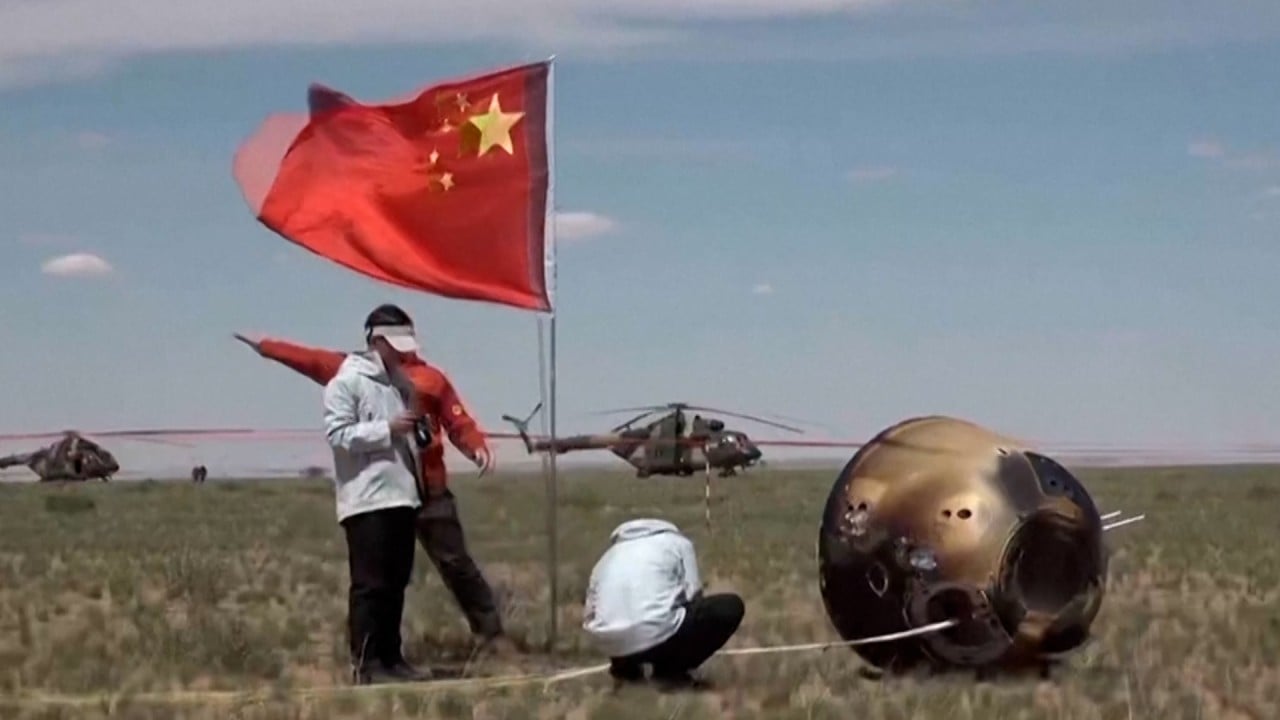China fortifies Tiangong space station after Russian satellite explosion
- In 6½-hour mission, two crew spacewalk to install shields against debris and photograph the station’s exterior

“The spacewalk primarily focused on installing protective devices on external cables and pipelines to mitigate risks posed by potential space debris collisions, enhancing the long-term safety and stability of the space station,” said Liu Ming, of the China Aerospace Science and Technology Corporation, in an interview with state broadcaster CCTV.
A defunct Resurs-P1 Russian Earth observation satellite exploded in orbit on June 26, generating more than 100 pieces of trackable debris, according to US Space Command.
The incident prompted Nasa mission control in Houston to direct six US astronauts on the International Space Station to execute “safe haven” procedures to mitigate debris risk, although it is not clear if this influenced China’s protective measures for its Tiangong space station.
For the spacewalk just before 11pm Hong Kong time on Wednesday, a robotic arm moved astronaut Li Cong to the station’s external equipment site. Fellow astronaut Ye Guangfu followed, handing over necessary equipment and devices to Li.
Ye then climbed along the station’s exterior to the work site, where he helped Li to install the protective devices. Meanwhile, another astronaut, Li Guangsu, monitored the robotic arm from the Tianhe core module and provided support.
After completing the installation, Li Cong used the robotic arm to move to an inspection point where he used his helmet camera to survey and photograph the payload adaptor’s surface condition.
The two spacewalking astronauts, Ye Guangfu and Li Cong, subsequently returned to the Wentian lab module after the 6½-hour mission.
